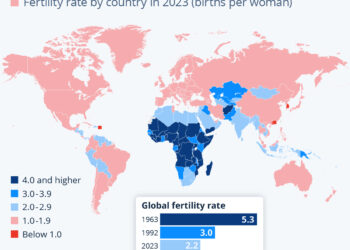Understanding Rare Earth Elements and Their Significance
What Are Rare Earth Elements (REEs)?
Rare Earth Elements (REEs) refer to a group of 17 metallic elements that play a crucial role in modern technology and industries. These include the 15 lanthanides, plus scandium and yttrium. Their properties make them invaluable in various applications, from electronics to renewable energy solutions.
The Role of REEs in Modern Technology
REEs are essential components in a myriad of high-tech applications. They are utilized in the manufacturing of:
- Electric Vehicles (EVs): REEs contribute to the creation of efficient batteries and electric motors.
- Semiconductors: These elements are vital for producing high-performance chips used in computers and smartphones.
- Defense Applications: Many military technologies, including missiles and drones, depend heavily on REEs for optimal performance.
Current State of Rare Earth Imports in the U.S.
Heavy Reliance on Chinese Imports
Between 2020 and 2023, the United States displayed significant reliance on rare earth imports from China, with an astounding 70% of its REE supply originating from this single country. This dependency has raised alarms concerning the stability of supply chains, especially in high-stakes sectors such as technology and defense.
Additional Suppliers
While China dominates the market, there are a few other countries that contribute to U.S. REE imports, namely:
- Malaysia
- Japan
- Estonia
These nations serve as supplementary sources, but none come close to matching China’s share.
Recent Developments in Export Controls
China’s Response to Tariffs
In a strategic move against U.S. tariffs imposed by the Trump administration, China has recently tightened its grip on the export of seven critical rare earth elements. This decision is significant as it showcases the geopolitical tensions surrounding trade in high-tech materials.
Affected Rare Earth Elements
The new export controls target seven rare earth elements:
- Samarium
- Gadolinium
- Terbium
- Dysprosium
- Lutetium
- Scandium
- Yttrium
These elements are pivotal for a variety of industries and their restricted availability could lead to supply constraints for companies depending on them.
Requirements for Export
Under the new regulations, exports of these elements will necessitate a special export license. This measure not only allows Chinese authorities to monitor the flow of these materials but also offers the potential for further restrictions on specific entities, such as U.S. defense contractors.
Exploring the U.S. Dependence on Yttrium
The Vital Role of Yttrium
Among the seven elements recently subjected to export regulations, Yttrium is notable. The United States sources approximately 93% of its Yttrium compounds from China. According to the U.S. Geological Survey, the country is entirely reliant on imports for Yttrium, which is majorly used in:
- Catalysts
- Ceramics
- Electronics
- Lasers
- Metallurgy
- Phosphors
This level of dependence on a single country for such a critical component raises significant concerns for U.S. industries.
Current Statistics on U.S. Imports
In terms of broader rare earth mineral imports, the U.S. was 80% net import reliant in 2024. This indicates that, although steps have been taken to increase domestic production, the United States still relies heavily on imports to meet its demand for rare earth materials.
Trends in Domestic Production
Despite the high levels of import reliance, there has been a notable decline from almost complete dependence (100%) in 2020, with an incremental rise in domestic production capabilities, which reached approximately 20% in 2024.
Implications for Future Strategies and Policies
Given the strategic importance of rare earth elements and the emerging restrictions imposed by China, it becomes increasingly crucial for U.S. policymakers and industry leaders to devise effective strategies that address these supply chain vulnerabilities. Increasing domestic production and diversifying supply sources may be essential pathways for ensuring resilience in critical sectors dependent on these vital materials.





